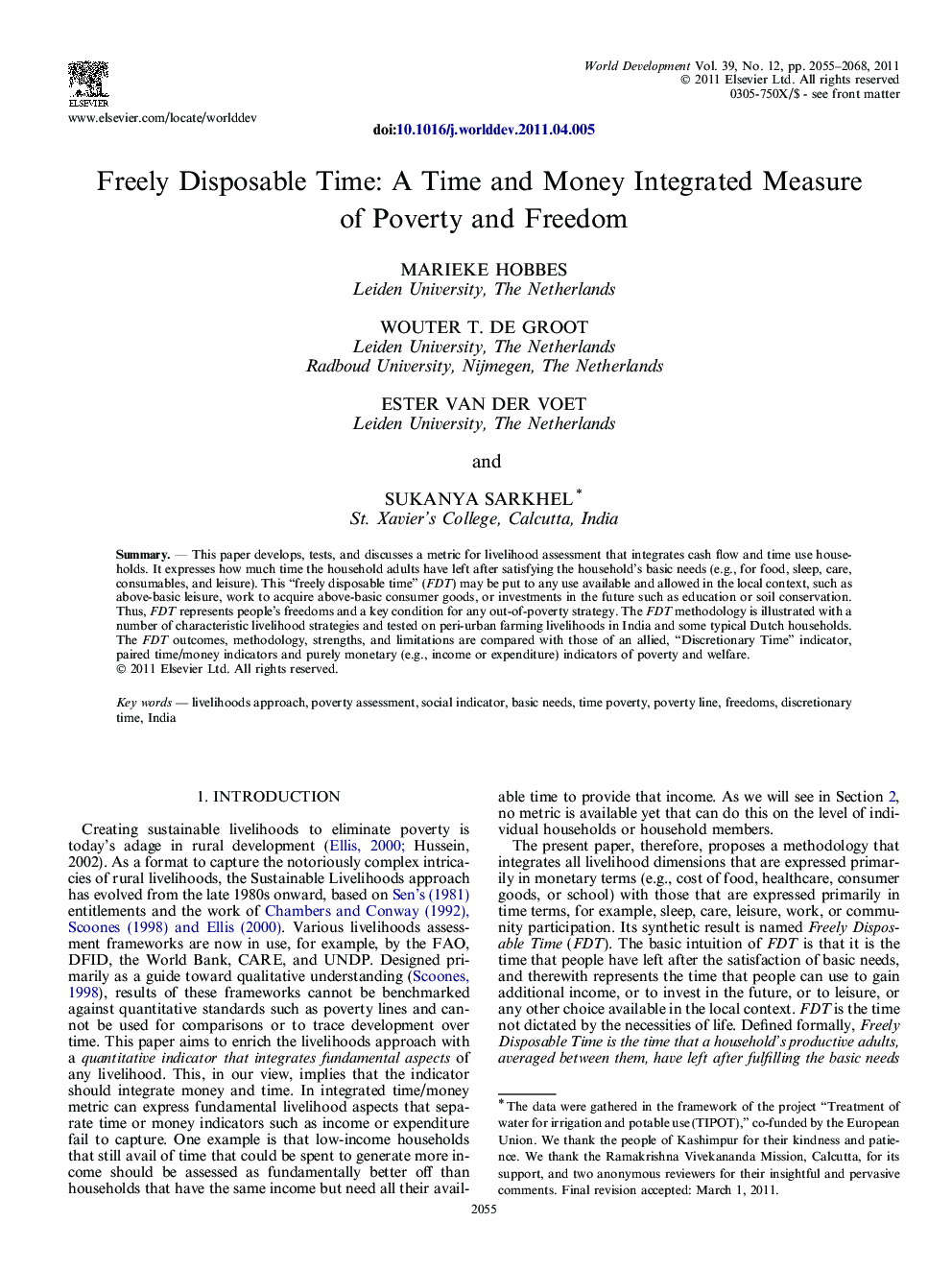| Article ID | Journal | Published Year | Pages | File Type |
|---|---|---|---|---|
| 989071 | World Development | 2011 | 14 Pages |
SummaryThis paper develops, tests, and discusses a metric for livelihood assessment that integrates cash flow and time use households. It expresses how much time the household adults have left after satisfying the household’s basic needs (e.g., for food, sleep, care, consumables, and leisure). This “freely disposable time” (FDT) may be put to any use available and allowed in the local context, such as above-basic leisure, work to acquire above-basic consumer goods, or investments in the future such as education or soil conservation. Thus, FDT represents people’s freedoms and a key condition for any out-of-poverty strategy. The FDT methodology is illustrated with a number of characteristic livelihood strategies and tested on peri-urban farming livelihoods in India and some typical Dutch households. The FDT outcomes, methodology, strengths, and limitations are compared with those of an allied, “Discretionary Time” indicator, paired time/money indicators and purely monetary (e.g., income or expenditure) indicators of poverty and welfare.
